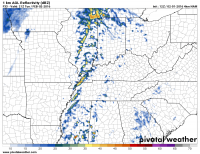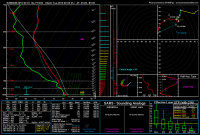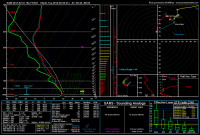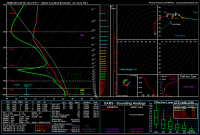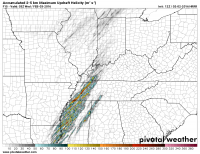Jonathan Beeson
EF1
- Joined
- Jan 12, 2015
- Messages
- 51
Quite a difficult and complicated forecast for parts of Dixie Alley has been manifesting itself for the past week or so, but I figured there was enough certainty to start a thread for this event.
As it stands right now, it looks like anywhere from 750-1500 J/KG of CAPE will push northward across parts of Mississippi, Alabama, and Tennessee Tuesday afternoon and evening, with a strong LLJ racing out of the southwest. The biggest uncertainties with the forecast appears to be the helicity values and location of the 500mb trough, as previous runs pulled it significantly to the NW before dropping it back to the SE again. Nonetheless, the 4km NAM seemed to support the idea of a broken line of cells forming across MS and western TN during the day Tuesday, before pushing this line east across AL Tuesday evening. Lapse rates generally seem to be adequate for the updrafts to sustain themselves, but there's been some uncertainty between the models in that regard.
All-in-all, this system has potential to produce perhaps a strong tornado or two across Dixie Alley, but the uncertain lapse rates is leading me to believe that bust potential could be higher than usual as well with this system.
As it stands right now, it looks like anywhere from 750-1500 J/KG of CAPE will push northward across parts of Mississippi, Alabama, and Tennessee Tuesday afternoon and evening, with a strong LLJ racing out of the southwest. The biggest uncertainties with the forecast appears to be the helicity values and location of the 500mb trough, as previous runs pulled it significantly to the NW before dropping it back to the SE again. Nonetheless, the 4km NAM seemed to support the idea of a broken line of cells forming across MS and western TN during the day Tuesday, before pushing this line east across AL Tuesday evening. Lapse rates generally seem to be adequate for the updrafts to sustain themselves, but there's been some uncertainty between the models in that regard.
All-in-all, this system has potential to produce perhaps a strong tornado or two across Dixie Alley, but the uncertain lapse rates is leading me to believe that bust potential could be higher than usual as well with this system.


